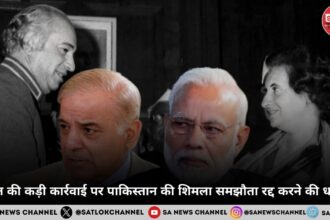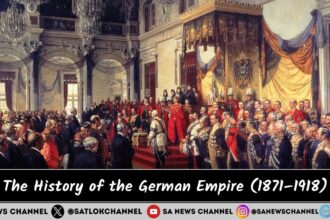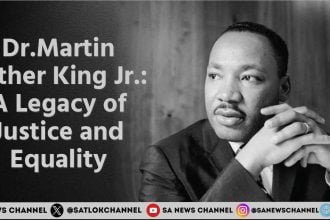Queen Elizabeth II was the longest-serving monarch in British history, with a reign of over seventy years. However, her life was interwoven with global upheavals, cultural transformations and personal trials that unfolded under constant public scrutiny. This article explores the biography of Queen Elizabeth II and also analyses the inevitable connection between royalty and sufferings in this illusionary world, masking the truth leading to divine peace.
- Highlights on The Biography of Queen Elizabeth II
- Queen Elizabeth II Biography: Early Life
- Queen Elizabeth II Biography: World War II and Early Duties
- Queen Elizabeth II Life Events: Marriage and Family
- Queen Elizabeth II Life Events: Accession and Coronation
- Life of Queen Elizabeth II: Reign and National Role
- Queen Elizabeth II As a Monarch and Her Neutrality in Grave Matters
- Life of Queen Elizabeth II: Family Troubles and Public Criticism
- Modernisation, Controversies and Challenges in the Reign of Queen Elizabeth II
- Personal Life Beyond the Crown
- Later Years and Passing Away of Queen Elizabeth II
- What is the Legacy of Queen Elizabeth II?
- Sant Rampal Ji Maharaj Reveals the Mystery of Royalty Adorned in Sin
- FAQs
Highlights on The Biography of Queen Elizabeth II
- Queen Elizabeth II ruled Britain for seventy years, making her the longest-reigned monarch of Britain.
- Contrary to popular belief of Elizabeth being named after Queen Elizabeth I, she was actually named after her mother Elizabeth.
- Her long reign as the Queen saw as many as fifteen Prime Ministers change offices in the country.
- Just like in olden days, when kings used to go undercover to assess the state of affairs of their country, Queen Elizabeth II also tried this when in Scotland once.
- Her coronation ceremony was attended by as many as over 8,000 guests.
- Despite her long reign as the Queen, she remained under public scrutiny and faced criticism for her questionable actions.
Queen Elizabeth II Biography: Early Life
Have you ever paused to ask why some people are born to rule while others are destined to follow? Why do we so often use the word ‘destiny’ when speaking of monarchs and leaders? If life is already mapped out by forces beyond our control and is preordained, why do we still struggle to explain it with logic and science? These questions cut deeper than history or tradition. They challenge our understanding of power, fate and the invisible hand that shapes human lives.
Elizabeth Alexandra Mary Windsor was born in London on 21st April 1926, the first daughter of Prince Albert (later King George VI), Duke of York and Lady Elizabeth Bowes-Lyon. She grew up alongside her younger sister, Princess Margaret, enjoying a relatively quiet royal childhood. Educated privately at home, Elizabeth studied subjects such as history, law, religion, music and languages, while also spending much of her time at the family’s country residences.
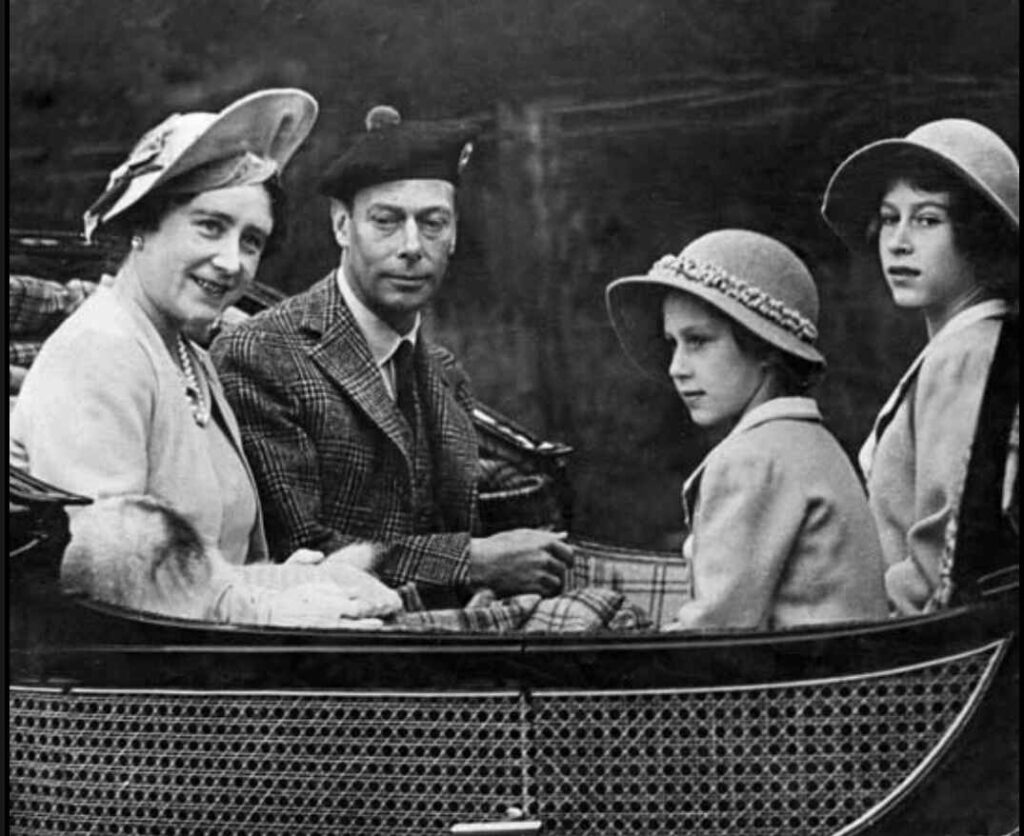
Although not originally destined for the throne, her life changed dramatically in 1936 when her uncle, King Edward VIII, abdicated the throne to marry Wallis Simpson. This unexpected turn of destiny placed her father on the throne as King George VI and made Elizabeth the heir presumptive.
Her destiny was fulfilled on 6 February 1952, when King George VI passed away. At just 25 years old, Elizabeth became Queen. She officially became Queen during the coronation at Westminster Abbey on 2 June 1953. Broadcast live on television for the first time, the ceremony reached millions of households, establishing Elizabeth II as both a traditional ruler and a modern figure in the new media age.
Queen Elizabeth II Biography: World War II and Early Duties
- As heir presumptive, Elizabeth gradually assumed public responsibilities. During the Second World War, she joined the Auxiliary Territorial Service, training as a driver and mechanic.
- This was symbolic as she became the first female member of the royal family to serve in the armed forces, serving as a symbol of national unity during wartime.
- Alongside these responsibilities, she began taking on public engagements, accompanying her parents on official tours and gradually preparing for her future as monarch.
- Even in her teenage years, she began to represent the monarchy abroad, accompanying her parents on official tours and gradually preparing for her future as monarch.
Queen Elizabeth II Life Events: Marriage and Family
- In 1947, Elizabeth married Philip Mountbatten, formerly Prince of Greece and Denmark.
- Their marriage endured for over seventy years, producing four children – Charles (born 1948), Anne (1950), Andrew (1960) and Edward (1964).
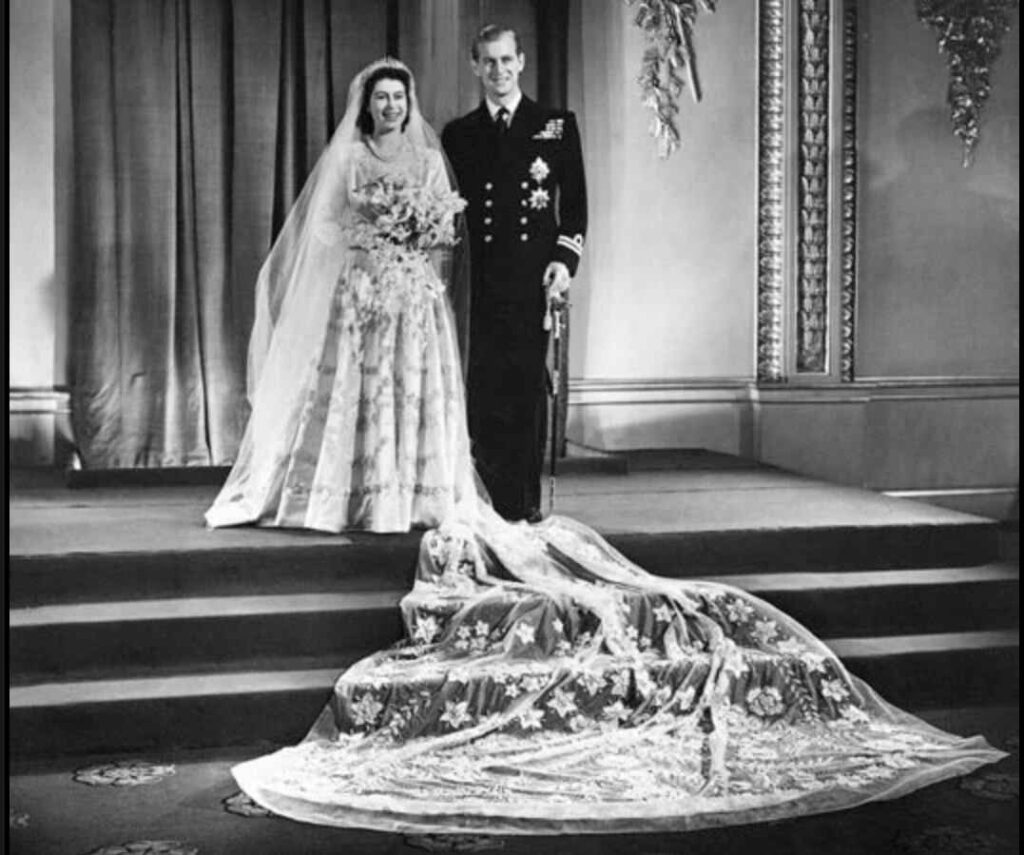
Their relationship was not free from speculation. Philip’s naval career and his occasionally outspoken personality were often contrasted with Elizabeth’s calm reserve. Despite this, their marriage provided personal stability for the Queen throughout her reign.
Queen Elizabeth II Life Events: Accession and Coronation
Elizabeth became Queen on 6 February 1952 following the death of her father, King George VI. She was just 25 years old when she ascended the throne. Her accession instantly became a symbol of continuity in a world emerging from the devastation of war.

Image Title: The Coronation of Queen Elizabeth II
Image Credit: Royal UK
Her coronation on 2 June 1953 at Westminster Abbey was a landmark in modern media. It was the first coronation to be broadcast on live television, allowing millions worldwide to witness the historic occasion. This move not only reinforced her public image as a traditional monarch but also as a modern figure who embraced technology.
Life of Queen Elizabeth II: Reign and National Role
- The early years of Elizabeth’s reign were defined by post-war recovery and the decline of the British Empire.
- She became the head of the Commonwealth, an association of independent nations that replaced Britain’s former colonial dominance.
- Her state visits and global tours symbolised Britain’s shift from empire to diplomacy. Her global tours were celebrated by the media for fostering goodwill but also drew criticism for avoiding frank engagement with Britain’s colonial past.
- Critics noted that she seldom acknowledged historical wrongs such as violence during uprisings in Kenya or the exploitation of resources under the empire.
- As a result, her global image was always double-edged – admired for diplomacy and yet shadowed by unresolved questions of colonial legacy, also personal controversies.
- At home, her reign coincided with massive social changes such as the rise of youth culture, women’s liberation and shifts in class, politics, etc.
- Through all this, Elizabeth maintained political neutrality, holding weekly meetings with prime ministers, aiming to serve as a stabilising presence across turbulent decades.
- Whether Queen Elizabeth II succeeded in her efforts to be perceived as a stabilising factor along with maintaining political neutrality remains a debatable question.
Queen Elizabeth II As a Monarch and Her Neutrality in Grave Matters
At just twenty-five, Elizabeth inherited the entire kingdom with an expectation from her family that she would provide continuity while avoiding political partisanship.
Also Read: The History of the Victorian Era: A Transformative Age in British History
Throughout her tenure, she worked with fifteen prime ministers from Winston Churchill to Liz Truss. Her political neutrality has been criticised many times, especially in moments of crisis her silence sometimes appeared detached. She saw this as a balance between stability and remoteness shaped much of her reign.
Life of Queen Elizabeth II: Family Troubles and Public Criticism
While Elizabeth aimed to represent stability, her family life often drew controversy. The 1980s and 1990s brought intense scrutiny of the royal household.
- Charles and Diana: The marriage of Prince Charles to Lady Diana Spencer in 1981 was celebrated as a fairy-tale event. However, the relationship broke down. It led to separation in 1992 and ultimately, divorce in 1996. Their turbulent marriage was checkered by scandals and deeply affected the monarchy’s image.
- Annus Horribilis: In 1992, the Queen referred to the year as her ‘annus horribilis’ (horrible year), as three of her four children’s marriages collapsed. Additionally, a fire severely damaged Windsor Castle.
- Diana’s Death in 1997: Public anger erupted at the Queen’s delayed response following Princess Diana’s tragic death. The Queen’s initial silence after Diana’s death is what provoked public anger. Critics accused her of appearing cold and detached. Only after days of criticism did she address the nation, revealing how rigid tradition clashed with modern expectations of empathy when Elizabeth had to address the nation under public pressure.
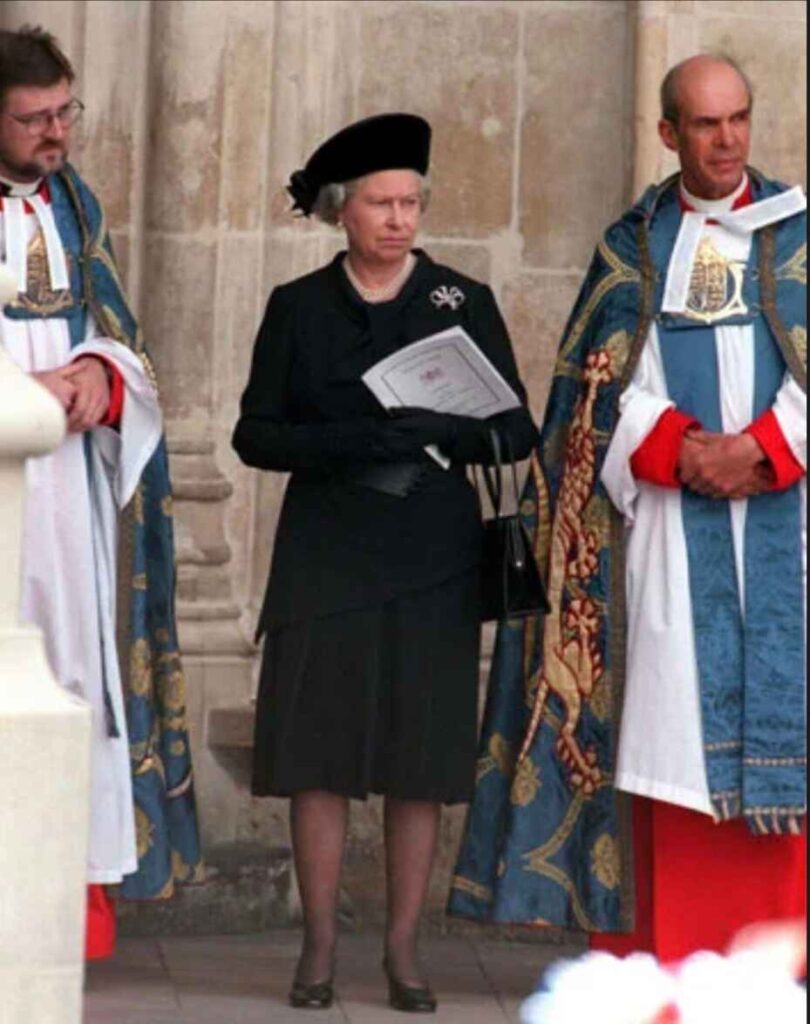
Image Credit: Encyclopædia Britannica, Inc.
- Later family scandals further strained her role as matriarch. Prince Andrew’s association with Jeffrey Epstein tarnished royal reputation.
- Prince Harry and Meghan Markle’s withdrawal from duties, paired with accusations of racism, also triggered fresh debate about the monarchy’s relevance in a diverse and democratic society.
Modernisation, Controversies and Challenges in the Reign of Queen Elizabeth II
Elizabeth presided over a monarchy attempting to adapt to modern expectations. Though she introduced reforms such as paying income tax voluntarily and opening royal residences to the public, challenges persisted:
- Her Golden Jubilee in 2002 and Diamond Jubilee in 2012 celebrated her longevity on the throne, with large public festivities reaffirming her popularity. However, controversies remained. There have been several questions about the monarchy’s cost to taxpayers, its relevance in modern democracy and a persistent scrutiny of royal finances.
- The Queen also faced new personal challenges with her family with continued modernity. Prince Andrew’s connections to Jeffrey Epstein damaged the monarchy’s reputation, leading to Andrew’s withdrawal from royal duties.
- Meanwhile, the further breakdown of the younger generations of her family such as Prince Harry and Meghan Markle’s decision in 2020 to step back from official roles also affected the public image of the British royals significantly.
- Aberfan Disaster in 1966: She delayed visiting the Welsh village where 144 people, mostly children, were killed in a landslide. This hesitation was criticised and later regarded as one of her greatest regrets.
- Princess Diana’s Death in 1997: Seen as emotionally detached during national mourning.
- Lack of Financial Transparency: Public outrage erupted when taxpayers contributed to Windsor Castle’s repairs, prompting demands for greater royal accountability.
- Ignoring Colonial Injustice: Her reluctance to address slavery and colonial injustices led to growing republican movements in the Caribbean and beyond.
- Northern Ireland Controversy: Though the controversy with Northern Ireland softened after years of reconciliation efforts, it remained complicated and lined with several death threats for years.
Personal Life Beyond the Crown
Outside her public duties, Elizabeth was passionate about horses, racing and her beloved corgis. Friends and staff often described her as witty and pragmatic, in contrast to her formal public image.
Also Read: The History of the Victorian Era: A Transformative Age in British History
Her marriage to Prince Philip, though occasionally rumoured to face difficulties, remained a source of stability until his death in 2021. Their partnership was central to her personal resilience throughout decades of service.
Later Years and Passing Away of Queen Elizabeth II
The final decade of Elizabeth’s life was marked by personal loss and public endurance.
- COVID-19 Pandemic: During the height of the crisis in 2020, Elizabeth delivered a rare national address. She assured the public with the phrase ‘we will meet again’. This resonated deeply with citizens during lockdown, providing hope in times of distress.
- In 2021, she lost her husband, Prince Philip, after 73 years of marriage. The image of the Queen sitting alone at his funeral during pandemic restrictions was deeply moving to the citizens.
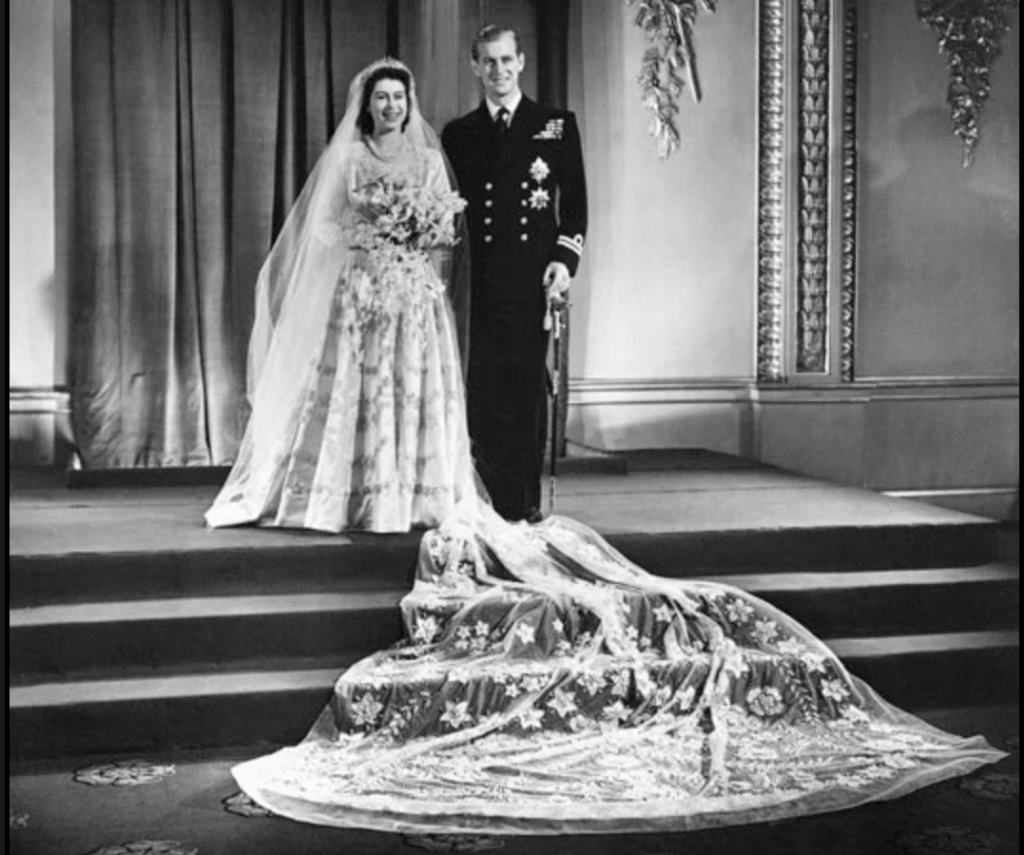
Image Title: Queen Elizabeth II at Prince Philip’s funeral.
Image Credit: Encyclopædia Britannica, Inc.
- In 2022, she celebrated her Platinum Jubilee, becoming the first British monarch to mark 70 years on the throne. Despite declining health, she made appearances to greet her people, underscoring her dedication until the end.
On 8 September 2022, Queen Elizabeth II died at Balmoral Castle in Scotland, aged 96. Her death closed the longest reign in British history.
What is the Legacy of Queen Elizabeth II?
Queen Elizabeth II’s life story is complex and layered. To many, she was the embodiment of stability, guiding the monarchy through decades of social, cultural and political change. Yet, her reign was not without criticism.
- From her handling of Diana’s death to questions about the monarchy’s relevance and financial transparency, Elizabeth faced moments where tradition clashed with modern expectations.
- Her reluctance to openly address Britain’s colonial past also left unresolved debates within the Commonwealth.
- Why are all the lives of Kings and Queens marred with controversies, where in reality, their purpose should have been safeguarding their people and kingdom?
- This repetitive pattern has always gone unnoticed by common people like us. But it is no mere coincidence that the lives of royalty and sins have always walked hand in hand.
Jagatguru Tatvdarshi Sant Rampal Ji Maharaj explains that being born into a royal family is not accidental but the outcome of immense penance and austerities performed in previous births. Such souls inherit high spiritual credit. Yet, when they finally enjoy the ‘rewards’ of their past austerities, their lives become entangled with the burden of bad karma. This paradox can only be unravelled through the complete spiritual wisdom of a Tatvdarshi Sant – a True Saint Who reveals the hidden law of karma and destiny.
Sant Rampal Ji Maharaj Reveals the Mystery of Royalty Adorned in Sin
Sant Rampal Ji Maharaj unveils the profound spiritual mystery behind the lives of kings and queens. In this mortal domain ruled by Kaal Brahm (Satan), deceptive seeds of false practices have been sown, leading souls to believe that forced rituals and austerities are the only route to God.
In their earnest search for the Divine and true happiness, countless devotees unknowingly fall into this trap. Mistaking hollow practices for the ultimate path, they devote themselves with sincerity, yet the fruit of such penance is only temporary. They may be rewarded with material gains such as birth as kings, queens or celebrated figures, but this is far from liberation.
The hidden side of this reality is rarely known. Sant Rampal Ji Maharaj, highlighting a sacred verse from the eternal knowledge of the Sukshma Veda, reveals this concealed truth – worldly prestige is not salvation but a karmic reward that still binds the soul within the cycle of suffering:
Tapeshwari so Rajeshwari,
Rajeshwari so Narkeshwari||
Kaal Brahm cunningly exploits even the most pious souls by luring them with materialistic rewards. These worldly gains influence their power of true discretion, pushing them towards selfish or misguided choices that eventually lead to grave sins.
Under the unyielding law of karma, every deed bears fruit, whether good or bad. Thus, the accumulation of sinful actions seals a soul’s fate, dragging it into the torments of hell after death. The only safeguard against this vicious cycle orchestrated by Satan is the authentic spiritual knowledge imparted by a Tatvdarshi Sant. Today, Sant Rampal Ji Maharaj stands as the sole Complete Saint on Earth, the only one capable of imparting this supreme wisdom.
Additionally, Sant Rampal Ji Maharaj also highlights that forced spiritual practices of penance like Hatha yoga, meditation or hollow austerities, are condemned by our holy scriptures. Even though pursued with utmost devotion, such misguided paths only deepen the entrapment of souls within the cycle of birth and death, and never lead to salvation.
Indra Kuber Issh Ki Padvi, Brahma Varun Dharamraya |
Vishnunath ke Pur Ku Jakar, Bahur Aputha Aaya ||
Take Queen Elizabeth II as an example. Despite her seventy-year reign and the laurels she earned, she remained deprived of the rare opportunity to hear the true sermons of a Tatvdarshi Sant. Bound by her karma, the consequences awaiting her are inescapable. However, unlike her, you still hold the chance to break free from this grand deceptive illusion that governs the world.
Satsang ki Aadhi Ghadi, Tapp k Varsh Hazar |
To Bhi Barabar Hai Nahi, Kahe Kabir Vichar ||
That opportunity lies in embracing the eternal wisdom revealed by Sant Rampal Ji Maharaj. His wisdom alone can liberate the soul from the deception of Kaal and lead it to the eternal abode of the Supreme God.
Discover more by visiting:
- Website: www.jagatgururampalji.org
- YouTube channel: Sant Rampal Ji Maharaj
- Facebook page: Spiritual Leader Saint Rampal Ji
- ‘X’ handle: @SaintRampalJiM
FAQs
Q1. What was Queen Elizabeth II’s longest achievement?
Answer: She became Britain’s longest-reigning monarch, serving for 70 years.
Q2. Did Queen Elizabeth II face controversies?
Answer: Yes, many, including family scandals and criticism over the monarchy’s relevance.






